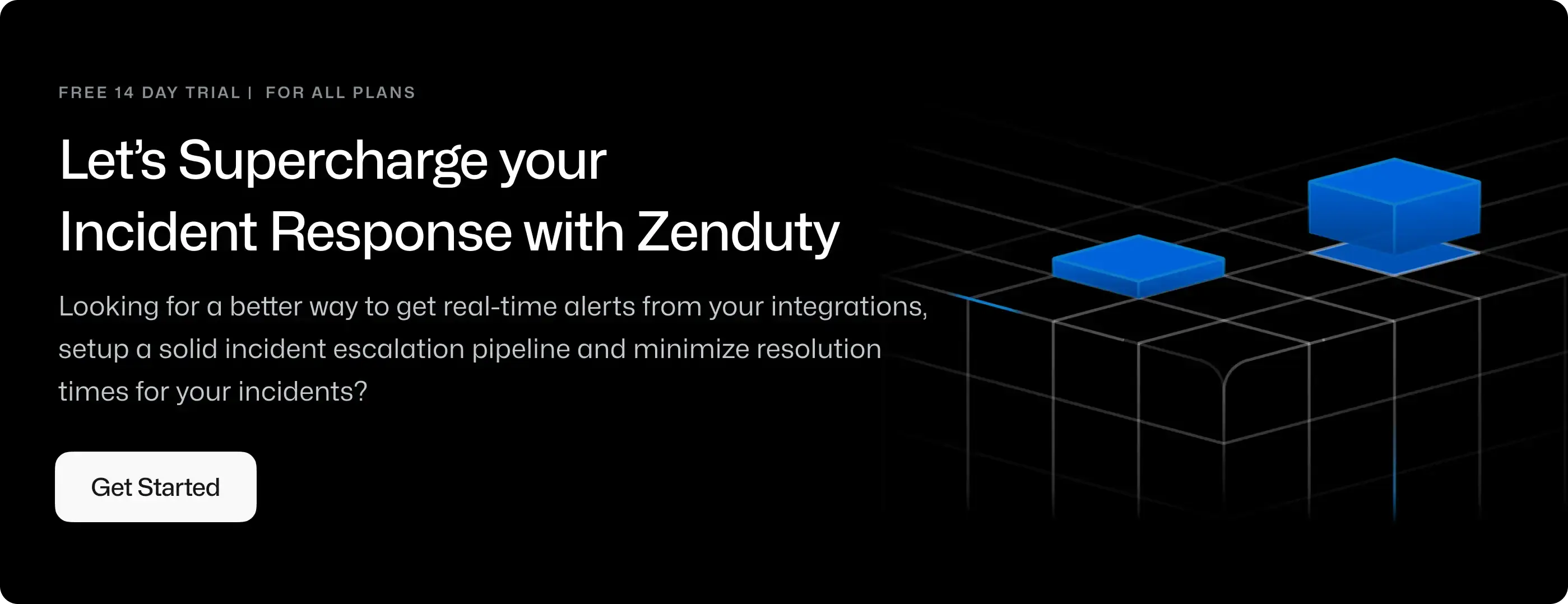Google Cloud Platform - Operations Integration Guide
Google Cloud's Operations Suite (formerly Stackdriver) is a monitoring service that provides IT teams with performance data about applications and virtual machines running on the Google Cloud Platform and Amazon Web Services public cloud.
What can Zenduty do for Google Cloud's Operations Suite users?
With the Google Cloud Operations Suite(Stackdriver) Integration, Zenduty sends new Stackdriver alerts to the right team and notifies them based on on-call schedules via email, text messages(SMS), phone calls(Voice), Slack, Microsoft Teams and iOS & Android push notifications, and escalates alerts until the alert is acknowledged or closed. Zenduty provides your NOC, SRE and application engineers with detailed context around the Stackdriver alert along with playbooks and a complete incident command framework to triage, remediate and resolve incidents with speed.
Whenever Stackdriver triggers an alert based on a predefined condition, Zenduty will create an incident. When that condition goes back to normal levels, Zenduty will auto-resolve the incident.
You can also use Alert Rules to custom route specific Stackdriver alerts to specific users, teams or escalation policies, write suppression rules, auto add notes, responders and incident tasks.
To integrate Google Stackdriver with Zenduty, complete the following steps:
In Zenduty:
-
To add a new Google Stackdriver integration, go to Teams on Zenduty and click on the team you want to add the integration to.
-
Next, go to Services and choose the relevant Service.
-
Go to Integrations and then Add New Integration. Give it a name and select the application Google Stackdriver from the dropdown menu.
-
Go to Configure under your integrations and copy the Webhook URL generated.
In Google Stackdriver:
-
In the Cloud Console, select Monitoring.

-
In the Monitoring Navigation pane, click on Alerting.

-
Click on Edit notification channels.
-
The Notification channels dashboard contains a section for each notification channel type. Add a new Webhook notification channel. (Click on ADD NEW button next to Webhook)
-
Use the URL copied in Step 4.

-
Give a suitable name to the webhook and click on TEST CONNECTION. If the test succeeds, click on SAVE. (The save button is not activated until a successful test)
-
You have now created an alerting channel which can be used with any new or existing alert policy.
Using Notification Channels:
-
While creating a new alert policy, click on ADD NOTIFICATION CHANNEL

-
Select Webhook with Token Authentication as the Notification Channel type

-
Select the name of the created notification channel from the dropdown box and then click ADD.
With an Existing Alert Policy:
-
Under the list of all policies in the Alerting tab, select the policy to which the notification channel is to be added.
-
Click on EDIT in the top pane.

-
Scroll down to Notifications. Click on ADD NOTIFICATION CHANNELS.

-
Select Webhook with Token Authentication as the Notification Channel Type.

-
Select the name of the created notification channel from the dropdown box and then click ADD.
-
Stackdriver is successfully integrated with Zenduty.
References:
